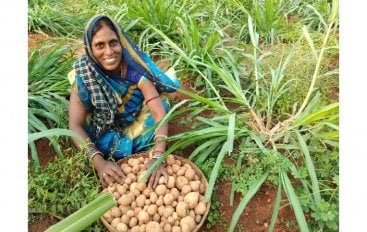Inflation for both agricultural and rural labourers moderated in September 2025, driven largely by a decline in food prices, according to data released by the Ministry of Labour and Employment.
The year-on-year Consumer Price Index (CPI) inflation for agricultural labourers (AL) stood at -0.07 per cent, while for rural labourers (RL) it eased to 0.31 per cent, down from 1.07 per cent and 1.26 per cent, respectively, in August. The Food Index, a key component of rural living costs, recorded sharper declines at -2.35 per cent for agricultural workers and -1.81 per cent for rural workers.
The All-India CPI for agricultural labourers fell by 0.11 points to 136.23, while the index for rural labourers declined by 0.18 points to 136.42 during the month. These indices are based on data collected from 787 sample villages across 34 states and Union Territories, with 2019 as the base year (2019=100).
The Labour Bureau reported that while the food component of rural inflation fell significantly, indices for “Fuel and Light,” “Clothing and Footwear,” and “Miscellaneous” items recorded slight increases, reflecting minor upward pressure in non-food categories.
Statewise Inflation
Among states, Mizoram, Jammu & Kashmir, and Haryana recorded relatively higher index levels for both agricultural and rural labourers, while Goa, Tripura, and Sikkim had lower levels. Maharashtra, Madhya Pradesh, and Bihar reported modest declines, consistent with the national trend.
The moderation in rural inflation coincides with India’s overall easing of price pressures. Data from the National Statistics Office shows the country’s retail inflation based on the consumer price index (CPI) fell to 1.54 per cent in September, the lowest since June 2017. Wholesale price index (WPI)-based inflation also eased to 0.13 per cent from 0.52 per cent in August.
The CPI indices for agricultural and rural labourers have undergone methodological revisions, including the use of Geometric Mean to reduce volatility and updated consumption patterns in line with COICOP-2018, enhancing the robustness and representativeness of the data.

